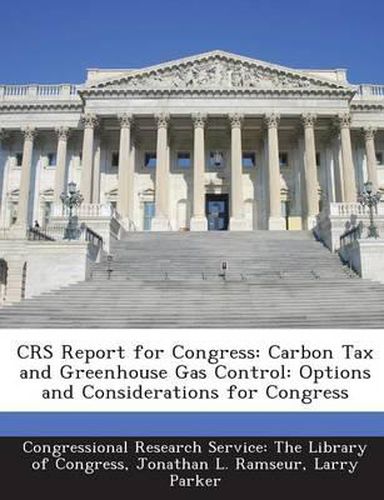Readings Newsletter
Become a Readings Member to make your shopping experience even easier.
Sign in or sign up for free!
You’re not far away from qualifying for FREE standard shipping within Australia
You’ve qualified for FREE standard shipping within Australia
The cart is loading…






Market-based mechanisms that limit greenhouse gas (GHG) emissions can be divided into two types: quantity control (e.g., cap-and-trade) and price control (e.g., carbon tax or fee). To some extent, a carbon tax and a cap-and-trade program would produce similar effects: Both are estimated to increase the price of fossil fuels, which would ultimately be borne by consumers, particularly households. Although there are multiple tools available to policymakers that could control GHG emissionsa \“including existing statutory authoritiesa \"this report focuses on a carbon tax approach and how it compares to its more frequently discussed counterpart: cap-and-trade. If policymakers had perfect information regarding the market, either a price (carbon tax) or quantity control (cap-and-trade system) instrument could be designed to achieve the same outcome. Because this market ideal does not exist, preference for a carbon tax or a cap-and-trade program ultimately depends on which variable one wants to controla \"emissions or costs. Although there are several design mechanisms that could blur the distinction, the gap between price control and quantity control can never be completely overcome. A carbon tax has several potential advantages. With a fixed price ceiling on emissions (or their inputsa \"e.g., fossil fuels), a tax approach would not cause additional volatility in energy …\”
$9.00 standard shipping within Australia
FREE standard shipping within Australia for orders over $100.00
Express & International shipping calculated at checkout
Market-based mechanisms that limit greenhouse gas (GHG) emissions can be divided into two types: quantity control (e.g., cap-and-trade) and price control (e.g., carbon tax or fee). To some extent, a carbon tax and a cap-and-trade program would produce similar effects: Both are estimated to increase the price of fossil fuels, which would ultimately be borne by consumers, particularly households. Although there are multiple tools available to policymakers that could control GHG emissionsa \“including existing statutory authoritiesa \"this report focuses on a carbon tax approach and how it compares to its more frequently discussed counterpart: cap-and-trade. If policymakers had perfect information regarding the market, either a price (carbon tax) or quantity control (cap-and-trade system) instrument could be designed to achieve the same outcome. Because this market ideal does not exist, preference for a carbon tax or a cap-and-trade program ultimately depends on which variable one wants to controla \"emissions or costs. Although there are several design mechanisms that could blur the distinction, the gap between price control and quantity control can never be completely overcome. A carbon tax has several potential advantages. With a fixed price ceiling on emissions (or their inputsa \"e.g., fossil fuels), a tax approach would not cause additional volatility in energy …\”